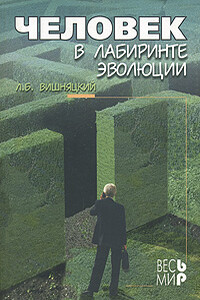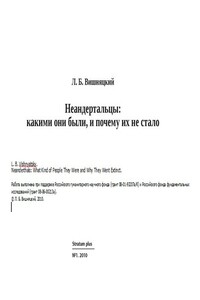Ruiz, J. F., Mas, M., Hernanz, A., Rowe, M.W., Steelman, K. L., Ga- vira, J. M. 2006. First radiocarbon dating of oxalate crusts over Spanish prehistoric rock art. International Newsletter on Rock Art 46, 1–5.
Schulting, R. J., Fibiger, L. (eds.). 2012. Sticks, Stones, and Broken Bones. Neolithic Violence in a European Perspective. Oxford: Oxford University Press.
Shang, H., Trinkaus, E. 2008. An ectocranial lesion on the Middle Pleistocene human cranium from Hulu Cave, Nanjing, China. AJPA 135, 431–437.
Sharma, G. R. 1973. Mesolithic lake cultures in the Ganga valley, India. PPS 39, 129–146.
Smith, M. J., Brickley, M. B., Leach, S. L. Experimental evidence for lithic projectile injuries: improving identification of an under-recognised phenomenon. JAS 34, 540–543.
Stock, J. T., Pfeiffer, S. K., Chazan, M., Janetsky, J. 2005. F-81 skeleton from Wadi Mataha, Jordan, and its bearing on human variability in the Epipaleolithic of the Levant. AJPA 128, 453–465.
Tagon, P., Chippindale, C. 1994. Australia’s ancient warriors: changing depictions of fighting in the rock art of Arnhem Land, N. T. Cambridge Archaeological Journal 4, 211–248.
Taylor, T. 2002. The Buried Soul: How Humanity Invented Death. Boston, MA: Beacon Press.
Tillier, A.-M. 1999. Les enfants Mousteriens de Qafzeh: Interpretation phylogenetique etpaleoauxologique. Paris: CNRS.
Trinkaus, E., Zimmerman, M. R. 1982. Trauma among the Shanidar Neandertals. AJPA 57, 61–76.
Underhill, A. P. 1989. Warfare during the Chinese Neolithic: A review of the evidence. In: Tkaczuk, D. C., Vivian, B. C. (eds.). Cultures in Conflict: Current Archaeological Perspectives. Calgary: University of Calgary Archaeological Association, 229–240.
Van Gurp, G., Hutchinson, T. J., Alto, W.A. 1990. Arrow wound management in Papua New Guinea. The Journal of Trauma 30, 183–188.
Vencl, S. 1984. War and warfare in archaeology. Journal of Anthropological Archaeology 3, 116–132.
Vencl, S. 1991. Interpretation des blessures causees par les armes au Mesolithique. L’Anthropologie 95, 219–228.
Vencl, S. 1999. Stone Age warfare. In: Carman, J., Harding, A. (eds.). Ancient Warfare: Archaeological Perspectives. Phoenix Mill: Sutton Publishing, 57–72.
Walker, P. L. 2001. A bioarchaeological perspective on the history of violence. ARA 30, 573–596.
Webb, S. 1995. Palaeopathology of aboriginal Australians. Health and disease across a hunter-gatherer continent. Cambridge: Cambridge University Press.
Weidenreich, F. 1943. The skull of Sinanthropus pekinensis. A comparative study on a primitive hominid skull. Paleontologia Sinica New Series D 10, iii-484.
Wendorf, F. 1968. Site 117: A Nubian Final Paleolithic graveyard near Jebel Sahaba, Sudan. In: Wendorf F. (ed.). The Prehistory of Nubia. Dallas: Fort Burgwin Research Center & Southern Methodist University Press, 954–995.
Wendorf, F., Schild, R. 1986. The Wadi Kubbaniya Skeleton: A Late Paleolithic Burial from Southern Egypt. Dallas: Southern Methodist University Press.
№ 1.2014
Wu, X.-J., Schepartz, L.A., Liu, W., Trinkaus, E. 2011. Antemortem trauma and survival in the late Middle Pleistocene human cranium from Maba, South China. PNAS 108 (49), 19558—19662.
Zollikofer, C. P. E., Ponce de Leon, M. S., Vandermeersch, B., Leveque, F. 2002. Evidence for interpersonal violence in the St. Cesaire Neanderthal. PNAS 99, 6444–6448.
Статья поступила в номер 31 сентября 2013 г.
Leonid Vishnyatsky (Saint Petersburg, Russia). Doctor of Historical Sciences. Institute for the History of Material Culture of the Russian Academy of Sciences 1.
Leonid Vishnyatsky (Sankt Petersburg, Rusia). Doctor In §tiinte istorice. Institutul de istorie a culturii materiale, Academia de §tiinte a Rusiei.
Вишняцкий Леонид Борисович (Санкт-Петербург, Россия). Доктор исторических наук. Институт истории материальной культуры Российской Академии наук.
E-mail: lvishn@yandex.ru
Address: 1 Dvortsovaya Nab., 18, Saint Petersburg, 191186, Russia
Fig. 4. Anthropomorph (or a seal?) from Cosquer in an artistic drawing made by R. Guthrie (Guthrie 2005: 182).




